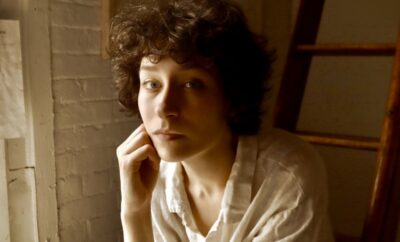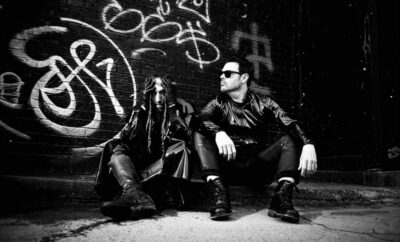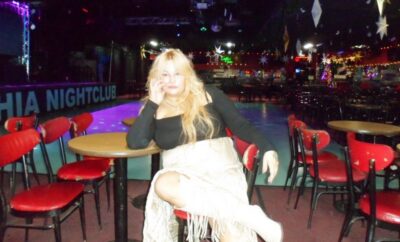
Interviews
Faded Paper Figures – Kairos
By: Jamie Steinberg
Q) How would you describe your sound?
Kael: It’s always been difficult to nail-down a specific genre that describes our style perfectly. We’ve been called Indie-tronica, electro-pop and even sometimes “folk-tronic.” I actually really love the fact that there is no perfect description of our sound. Being independent musicians, we are free to write in any genre we please on any given day.
John: I’d call it “synth pop,” with the understanding that we’re not all synth and not all pop!
Q) Who are some of your musical influences?
Kael: For me, inspiration comes from new bands every day. I’m always hunting for the next thing. Lately I’ve been really into trippy chilled-out stuff like Weval, Bonobo and Tora. The common thread in most of my influences is usually intricate synth work. I’m a sucker for analog warmth!
John: I grew up listening to Morrissey, Depeche Mode, New Order, The Stone Roses—a bit of an anglophile without really trying to be. Something in their sense of irony, darkness, charm, brilliance stayed with me as part of what it means to write a song. But I’m also less snooty than I was back then in terms of what I appreciate about pop music. I can see what people admire in a lot of pop today, even if it’s not in constant rotation for me. There’s an irony in high pop that I didn’t used to appreciate, but I see it now.
Q) Talk about the story behind your songs “Count It Out” and “Bones.”
John: “Count It Out” started as a brilliant and beautiful synth sketch Kael made in some kind of inhuman (and inhumane) musical time signature. I won’t give it away, but it’s enough to say that this isn’t a song in 4/4 time! When Kael showed it to me, I thought, “No way, I can’t write lyrics for that.” And, in fact, it stayed that way, as a rough sketch, for a few years. Finally, as we were gathering up enough songs for a new album, I realized that I’d have to make it work or the sketch would just get set aside and I liked it enough to keep at it. At some point we realized that there was a delicious irony in writing a song about time in such an odd time signature, and we thought, okay, this will work. As for “Bones,” two things sort of came together: a lifetime of skateboarding (appreciating all the danger and beauty that goes with it) and a recurring motif in the strange science fiction of the author J.G. Ballard. I noticed that he kept writing about empty swimming pools, usually as emblems of civilizational decay (imagining, for instance, what some distant civilization will think about all these strange holes we leave in the ground); it’s always something forlorn, sad and almost gothic. And it was that connection, between the craft of skating, and that image of the end of civilization that made me think there’s a song here.
Q) What do you think it is about the songs that fans connect to?
John: Recently, we asked fans to comment on which of our songs is their favorite and it surprised us how differently people have connected to the music, how many different songs individual people liked. And sometimes those connections are meaningful in ways that are very humbling for us. We’ve had people write to us, for example, to say that the song “Wake Up Dead” was their soundtrack while they went through chemotherapy. We’ve had people tell us “My Magellan” helped them through recovery and addiction. Some have played our songs at their weddings. We can’t speak for what everyone connects to, but we’re honored that they do.
Q) What made you select these as singles off your upcoming Kairos album?
John: They are, respectively, the first and last song on the album, so everything everyone hears from now on will be somewhere in the middle! To be honest, they’re not even some of our favorites from the new album, so we’re excited for the rest of it to get released.
Q) What is your song writing process? Do you need music before you can create lyrics?
John: Lyrics can arrive without music, but in those cases they’re very loose and haphazard – sometimes just a phrase or two, or maybe a jumbled set of images. Usually; however, it’s when we sit down with the music that the lyrics take on more structure. They tend to emerge together. Of course, there have been a few cases when we have a musical sketch that sits around for a long time before I can find the right lyrics for it (“Count It Out” was one of those, mainly for its weird time signature; it took me forever to figure out how to make it work).
Q) How much of a hand do you have in the production of your music?
Kael: We produce everything entirely on our own, top to bottom. In fact, it’s probably about time we outsource some of the production duties, just for our own sanity. All three of us tend to be perfectionists though, so it’s always just been easier to do it all ourselves.
John: Yeah, we’re intense enough about this process that I don’t know if it’d work to just hand the production reigns over to someone else. Production is, the way we do it, really composition. Still, we always love handing off stems to another engineer or band and watching what they do with remixes; it’s always good!
Q) What can fans expect from a live Faded Paper Figures performance if the day ever comes back around again?
John: Yes, we sure hope so!
Q) What songs off Kairos are you most looking forward to performing live?
Kael: Honestly, “Count It Out” has me giddy with excitement, mostly because I can’t wait to see how the crowd attempts to dance to the alternating 5/8 and 6/8 time meters. It’ll be awkward for sure, but it’s the unexpected starts and stops in that song that make it so jarringly interesting.
John: I think “Damned If” is a song that demands to be sung live. I hope we get to someday.
Q) What do you hope listeners take away from listening to your new album as a whole?
John: Ideally, Kairos will walk you through world that is strange and beautiful, with spots of real pain and longing, but also optimistic at its heart. Think of it as a road trip where you’re not overly anxious to get where you’re going, but you’re enjoying the ride; a place where you can just watch the horizon and think.
Q) Where are some of your favorite places to perform and what makes those locations so significant to you?
John: Obviously, Los Angeles was our home for many years and it’s still a place we love to perform, but we’ve also found great crowds in San Francisco, Portland, Seattle, Boston, New York City, Austin and Salt Lake City. In all of these places we met people who opened up their hearts for us, who cheered us on when we sounded great and maybe forgave us when the sound guy sucked. Sometimes people have driven from incredible distances to hear us play and we love hearing their stories: the young couple in love who listened to “North by North” for hours on the way to the show, the school teacher who plays “The Persuaded” when teaching about advertising, the tech worker who tells us that “Small Talk” got him through an all-night coding session and the kid who tell us “First Son” felt like it was written just for him. (These are all real). We’re always touched, always amazed.
Q) Who would you most like to collaborate with on a song in the future?
John: I dunno, maybe I could get Morrissey to do something woke! More seriously, I’d like to write a song with The Killers, maybe work together with them at some point, hear their story. Oh, and we’ve been planning for a long time to do a show with Late Night Alumni (my sister Becky Jean is their lead singer) in Salt Lake City and we actually had plans for it this month before the Pandemic hit. So, after things settle down, that’s a real possibility.
Q) What album/band are you currently listening to and why do you dig them?
Kael: My current jams are all trippy, chilled-out tunes that set a mellow mood. Weval, Bonobo and Caribou are a few that come to mind.
John: Lots of more recent stuff. I love: St. Vincent, Miniature Tigers, Say Hi, Delta Spirit, Surfer Blood, Sea Wolf, Of Montreal, Dr. Dog, Broken Bells, Ra Ra Riot, Fruit Bats, The Dodos, Pinback…I could go on and on. As for why I dig them, you’d have to ask the Algorithm God that seems to know what I like before I do.
Q) How big of a role has social media played in your connection with your fans during this time and in general?
Kael: As a band that has always functioned via long-distance, social media is perhaps our only steady connection with our fans and 2020 hasn’t really seen that change much, if at all. However, we do take courage knowing that our way of working remotely, something that has generally been seen as a logistical challenge for us to overcome, is now becoming a pretty standard modus operandi in the world.
John: Well, for a band that was born on MySpace, we’re (at least musically) digital natives. [laughs] Sometimes social media can feel like a very lonely place though. I feel for musicians who put a song out there and only a few people like it. It takes a lot to create something and put it out in the world. I’d encourage more people to “like” more music, not just ours. It costs nothing and the more people who feel rewarded for making music, the more likely people are to have the courage to make more music and put it out there.
Q) What would you like to say to everyone who is a fan and supporter of you and your work?
John: Thank you! Without your sticking with us, we’d have given up on this long ago. It really does motivate us to finish these songs when we know people are listening.





You must be logged in to post a comment Login